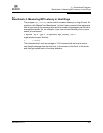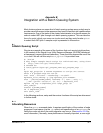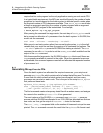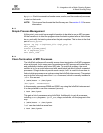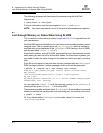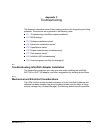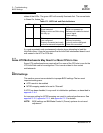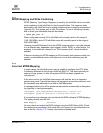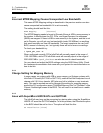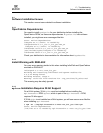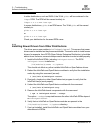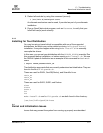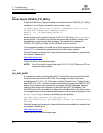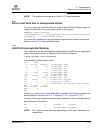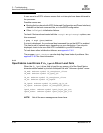
C – Troubleshooting
BIOS Settings
IB6054601-00 D C-3
Q
C.2.1
MTRR Mapping and Write Combining
MTRR (Memory Type Range Registers) is used by the InfiniPath driver to enable
write combining to the InfiniPath on-chip transmit buffers. This improves write
bandwidth to the InfiniPath chip by writing multiple words in a single bus transaction
(typically 64). This applies only to x86_64 systems. To see if is working correctly
and to check your bandwidth use this command:
$ ipath_pkt_test -B
When configured correctly, PCIe InfiniPath will normally report in the range of
1150-1500 MB/s, while HTX InfiniPath cards will normally report in the range of
2300-2650 MB/s.
However, some BIOSes don’t have the MTRR mapping option. It may be referred
to in a different way, dependent upon chipset, vendor, BIOS, or other factors. For
example, it is sometimes referred to as "32 bit memory hole", which should be
enabled.
If there is no setting for MTRR mapping or 32 bit memory hole, please contact your
system or motherboard vendor and inquire as to how write combining may be
enabled.
C.2.2
Incorrect MTRR Mapping
In some cases, the InfiniPath driver may be unable to configure the CPU Write
Combining attributes for the QLogic InfiniPath IBA6110. This would normally be
seen for a new system, or after the system’s BIOS has been upgraded or
reconfigured.
If this error occurs, the InfiniPath interconnect will operate, but in a degraded
performance mode. Typically the latency will increase to several microseconds, and
the bandwidth may decrease to as little as 200 MBytes/sec.
A message similar to this will be printed on the console, and normally to the system
log (typically in /var/log/messages):
infinipath: mtrr_add(feb00000,0x100000,WC,0) failed (-22)
infinipath: probe of 0000:04:01.0 failed with error -22
If you see this error message, you should edit the BIOS setting for MTRR Mapping.
The setting should look like this:
MTRR Mapping [Discrete]
You can check and adjust the BIOS settings using the BIOS Setup Utility. Check
the hardware documentation that came with your system for more information on
how to do this. Section C.2.3, below, documents a related issue.



